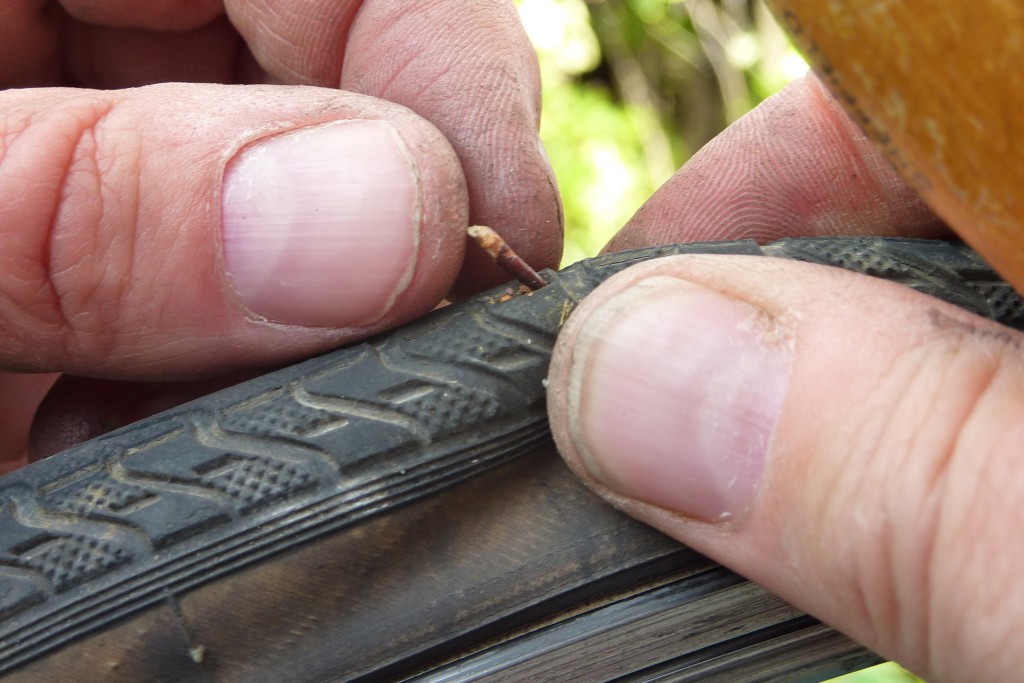Repairing bicycle punctures is a pain. On average I get a puncture every 1000 miles, far too often. Last week I think my 1000 miles were up as I managed to pick up a puncture as I was cycling to work. Here’s how I deal with it.
- As soon as you suspect you might have a puncture, stop and check it out. For me I clocked the problem as I turned a sharp corner fairly quickly and it felt as if the back wheel was sliding from under me. I looked back, hoping to see an oil slick but no, there was nothing there. So I stopped, felt the tyre and sure enough it was soft.
- There was a nearby gate to a field and that was a safer place to fix the problem. Some cyclists seem to think its fine to just stay in the road and fix a bike: please don’t do this. You might be feeling rather flat yourself if you get run over.
- I always carry one or two spare inner tubes, some Park Tools tyre levers and glue-less patches. Sometimes it seems a pain-in-the-neck making sure I always have this but I’m thankful when it’s needed.
- On my brake callipers there is a small lever where the outer brake cable joins the brake. Flip this up to slacken off the brake pads to make removal of the wheel easier. Some bikes will have something on the brake lever which allows for the brakes to slacken off.
- Once the wheel is off the bike, take a look around the tyre to see if there’s anything obvious causing the puncture. If you can see the problem, that might make it easier to patch the inner tube at that point. Don’t assume there’s nothing else sticking into the tyre – check it all over! Feel around inside the tyre to see if you can find anything else poking through.
- If you’re not patching the tube, replace it.
- Always inflate the new inner tube a little so it takes shape a little.
- Fitting the tyre is a reverse operation but take care not to pinch the new inner tube by using tyre levers to prise the tyre back onto the rim. Use your numbs if you can.
- Pump the tyre up. You are probably like me and don’t have any gauge on the hand pump so you’ll need to guess the pressure – how does it compare against the other tyre? As you’re pumping it up, make sure it is seated down nicely and not about to blow off the rim (causing an even bigger puncture to deal with).
- Refit the wheel, making sure the chain is on the same sprocket as when it come off (I normally put it into top gear before I take the wheel off).
- Remember to re-flip the brake cable adjuster.
- Check everything is safe, pick up you’re old inner tube, tyre levers, valve caps etc
- Check the wheel is in alright: straight, brakes okay, QR skewer tight and so on.





 RSS – Posts
RSS – Posts